Art Fairs
Design Miami Returns With Earthly, Spiritual Delights From Moon Jars to Biophilic Benches
The design fair is back and rife with reinvigorated narratives and a new curatorial director.
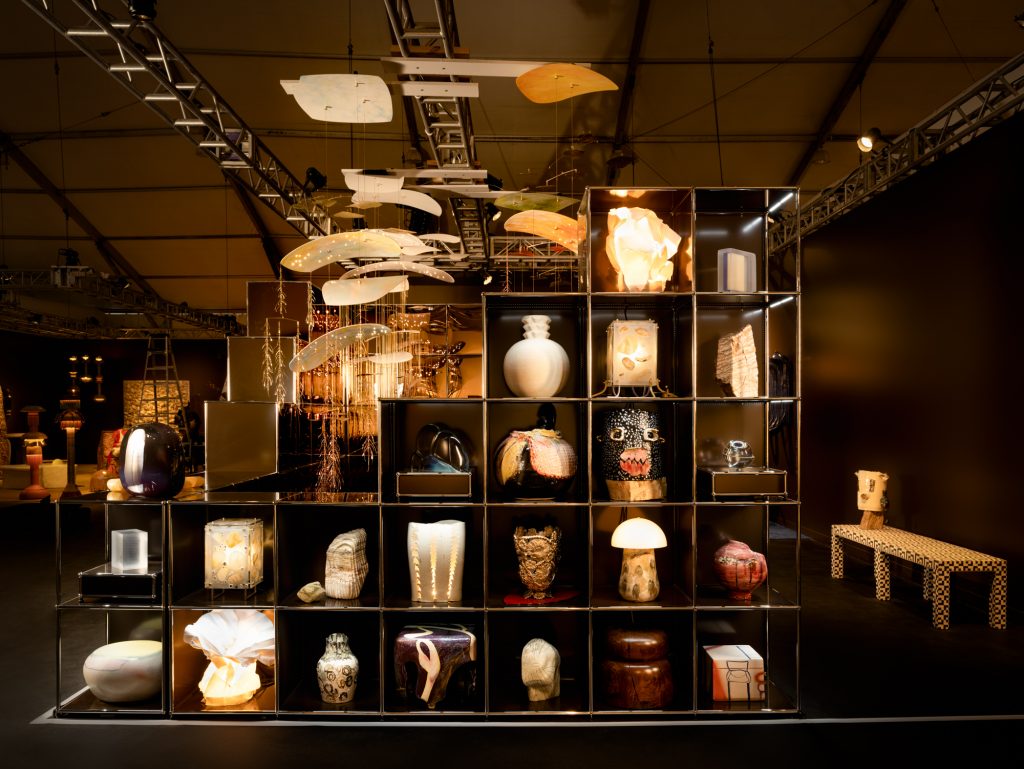
The design fair is back and rife with reinvigorated narratives and a new curatorial director.

William Van Meter

The swerve was evident in this year’s Design Miami, the fabulous furniture and objet appendage to Art Basel Miami Beach. The fair is situated directly across the street and runs through December 10. There was much more of a presence of fiber art, neutral tones, stone, and clay, with fresh and natural takes on all things modern, earthy, and roughhewn. There were sleek and sci-fi moments, but more so in the sense of an ancient society that was so far advanced that they just left this realm of reality to live on the astral plane. The theme this year is “Where We Stand,” which is described as “a celebration of design inspired by place, community, and heritage—and the beauty and power that can be drawn from our most intimate, rooted connections” in the press materials.
Themes at fairs often seem superfluous—galleries and designers are going to exhibit what they’re going to exhibit anyway. But it seems most everyone really got the memo from Design Miami‘s new curatorial director Anna Carnick and took it seriously. They didn’t necessarily flip out and scrounge for wicker, but the vibe was deeper. Look inwards as well as outwards, and what you have in the home is a manifestation of one’s spiritual life.
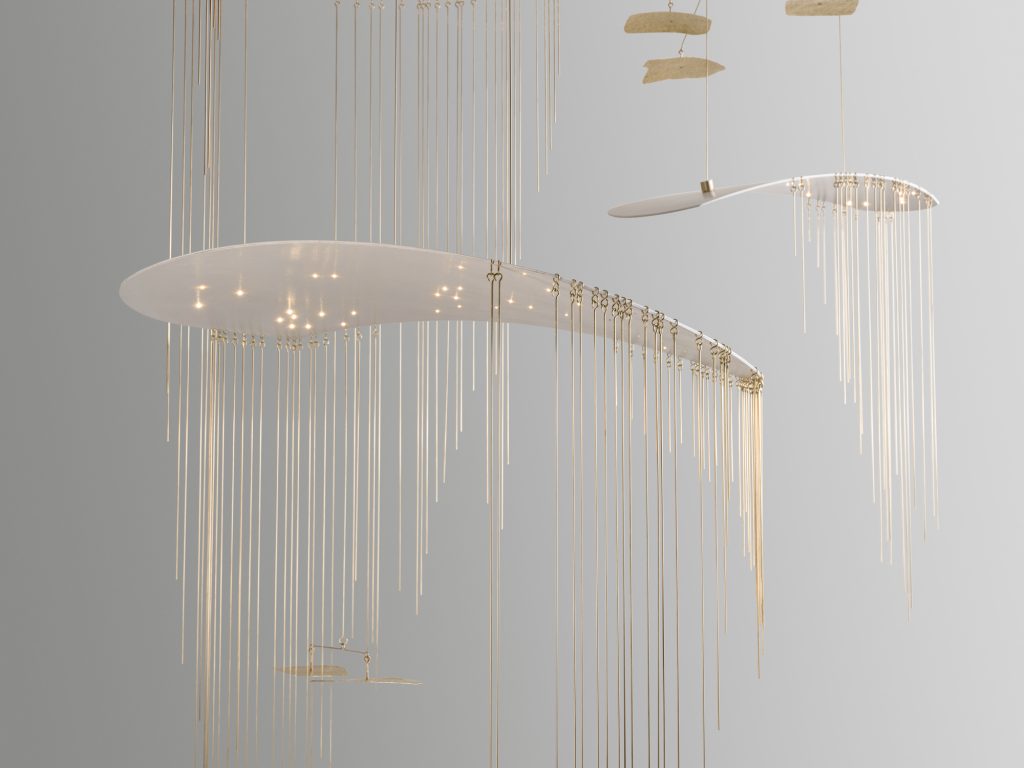
Karl Zahn, ST.WD.01 – Winter 1. Courtesy of The Future Perfect.
The Future Perfect delivered a pitch-perfect booth of curiosities, staged on custom chocolate-brown USM shelves, with some objects placed on matching USM pedestals. You’d return to it again and again as you circled the aisles, discovering something new each time—from Jane Yang D’Haene’s “Moon Jars” that seem otherworldly and ancient to Frank Traynor’s jeweled silver can openers. Hanging from the ceiling, Brooklyn-based Karl Zahn’s mobile light creations looked like floating jellyfish bobbing amongst seaweed.
The designer was on-hand to correct my wholly incorrect reading of his hand-painted works. “I grew up in the woods in Vermont. I’ve always been fascinated by willow trees because they’re next to bodies of water and they have these drape-y tendrils. They were always exotic to me. I’d find them late at night when the sun was coming down and the light was coming in through the boughs. The Stratus lights have always been cloud-inspired. With this series, I wanted to incorporate that wilderness. I saw an opportunity where light could shine through the willow branches like the setting sun through my childhood.”
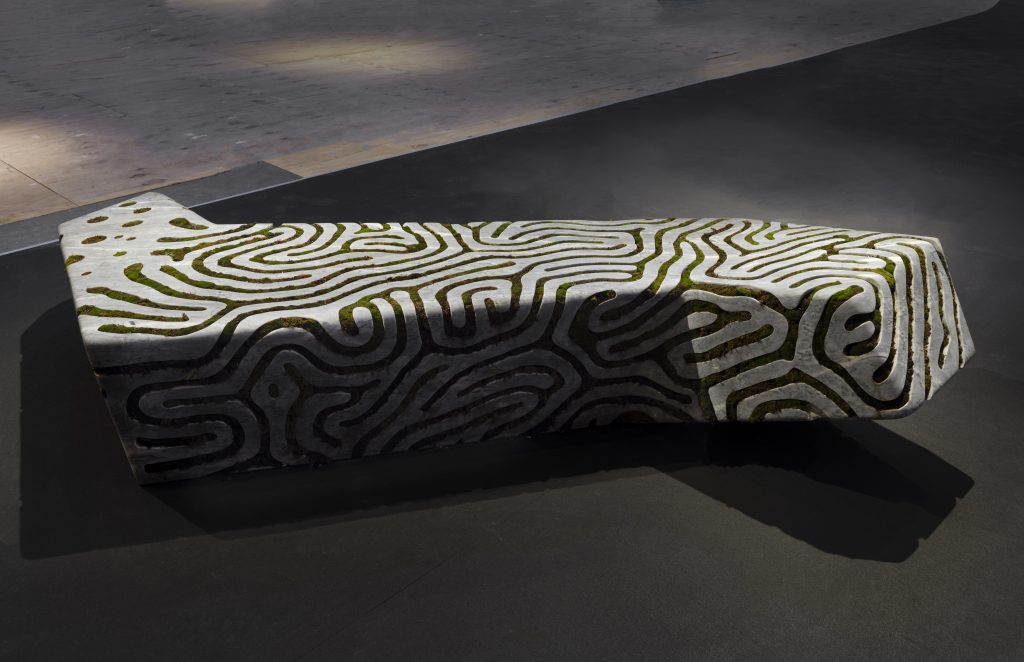
Joris Laarman, Symbio Bench (2023). Courtesy of Friedman Benda.
Joris Laarman took his eco-inspiration a step further with his grey marble Symbio Bench at Friedman Benda. The site-specific bench is designed to incorporate locally sourced organic life and become partly biophilic. Have a seat or watch it grow! Volunteers from the Miami Beach Botanical Garden down the street seeded this iteration with local mosses and lichens.
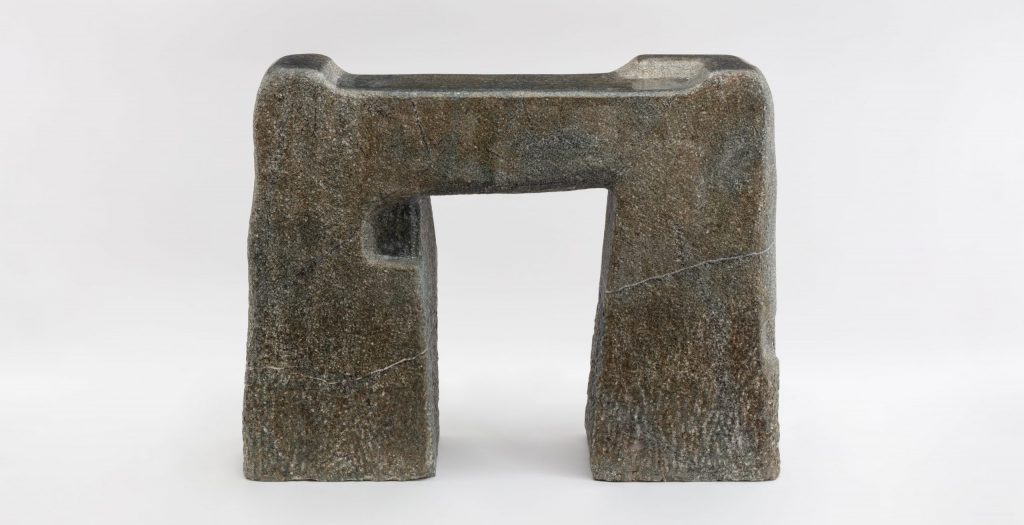
Faye Toogood, Lode II, at Friedman Benda. Photo: Angus Mil, courtesy of Friedman Benda and Faye Toogood.
Also at the booth, Faye Toogood’s neolithic monolith of a side table, crafted from Purbeck Marble—a limestone from Dorset with dense deposits of snail shell—looked like it was plucked from another millennium. “I felt like I was revealing something that had always been there—something almost prehistoric that had been lost to time, and it was my job to find it again,” she said about the collection in a statement.
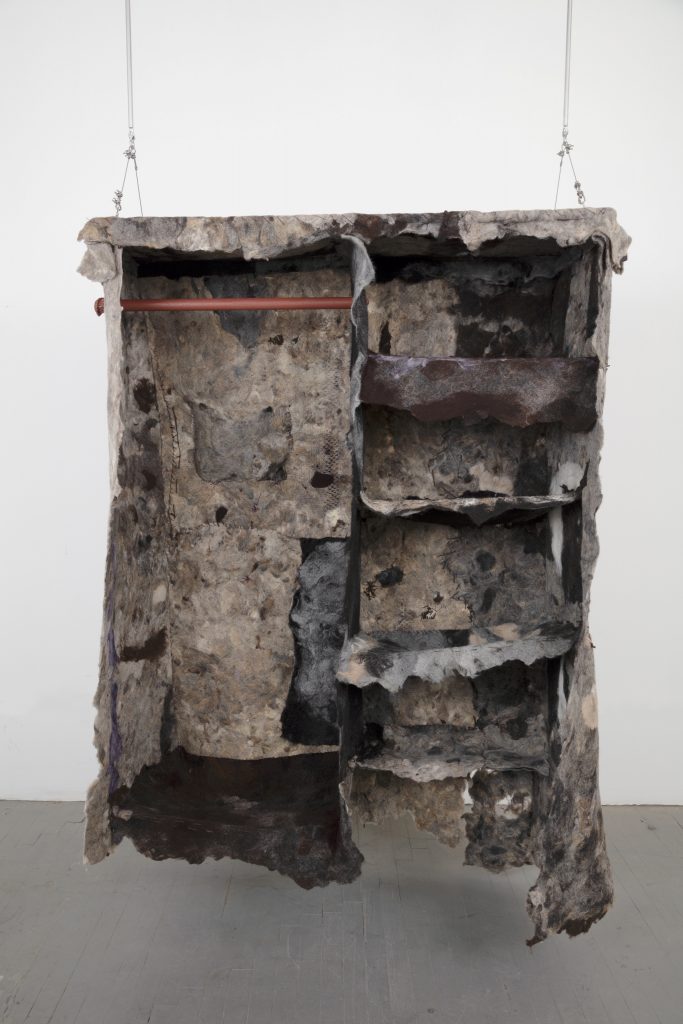
Olivia Vigo, Before we existed the woods were sacred, and then we came to dwell in those sacred woods (2021). Courtesy of Superhouse.
Chic cave dweller was a vibe shared by other artists as well. At New York’s Superhouse, Olivia Vigo combined raw sheep and alpaca fiber for a suspended shelving unit perfect for an Ice Age hunter-gatherer. It’s meant to hang from the ceiling to be viewed in the round like Shakespeare.
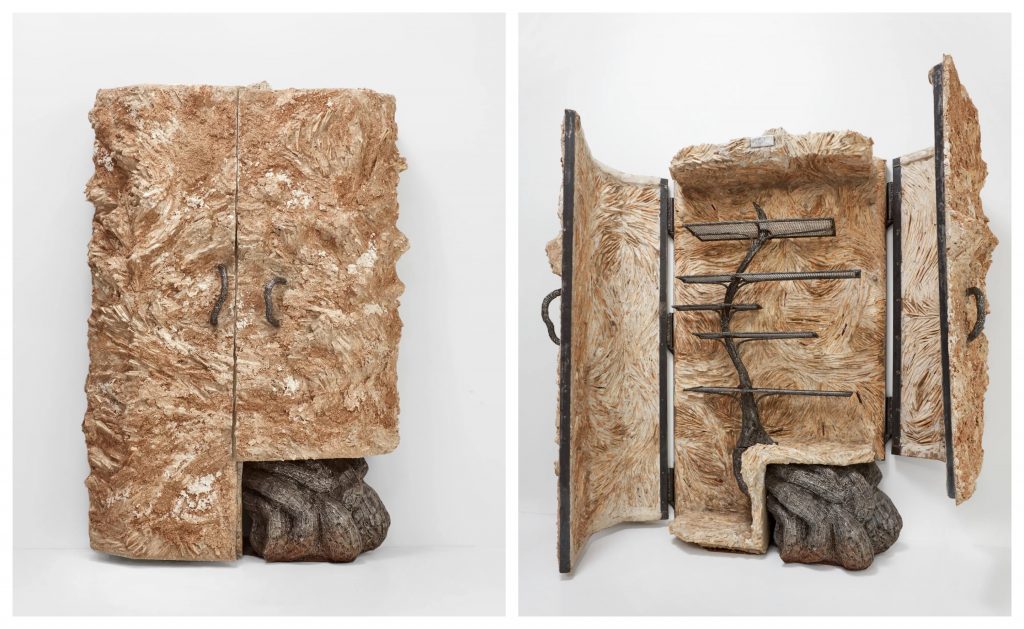
Nacho Carbonell, Contain Nature cabinet. Courtesy of Carpenters Workshop Gallery.
At Carpenters Workshop, the Netherlands-based designer Nacho Cabonell’s piece was a mysterious and compelling amalgamation of metal, sand, and wood, and looked more like a mystic dimensional portal than an armoire. Need! At Paris’s Negronpontes Galerie, Swedish artist Ulrika Liljedahl presented a horse of a different color. She sources materials direct from the stables for her suspended totem-like Technicolor horsehair hangings.
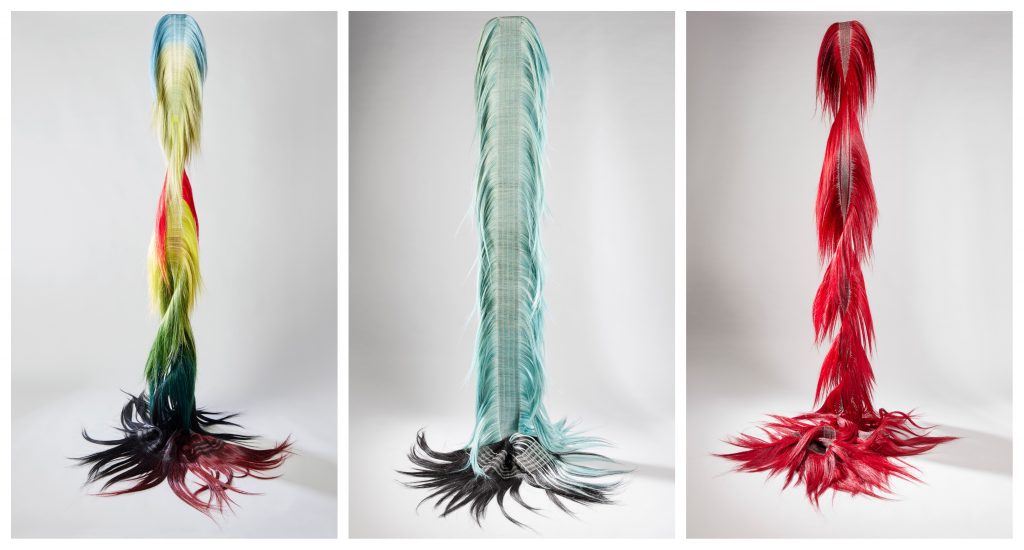
Ulrika Liljedahl, Presence Polychrome, Presence Aigue Marine, and Presence Rubis. Courtesy of Negropontes Galerie.
Harry Nuriev delivered another kind of ancient energy. Nuriev had the most talked-about piece last year with his sofa that resembled a pile of black garbage bags. This year, he took the theme a bit further with a sad jalopy of a blown-out sofa that looks like something you’d see curbside waiting for garbage pickup. But it’s the epitome of stealth luxury. The denim fabric isn’t ripped and frayed exposing foam—that’s a trompe l’oeil tapestry print. The super comfortable couch looked horror film-terrifying in its bare white booth with glowing florescent lights.
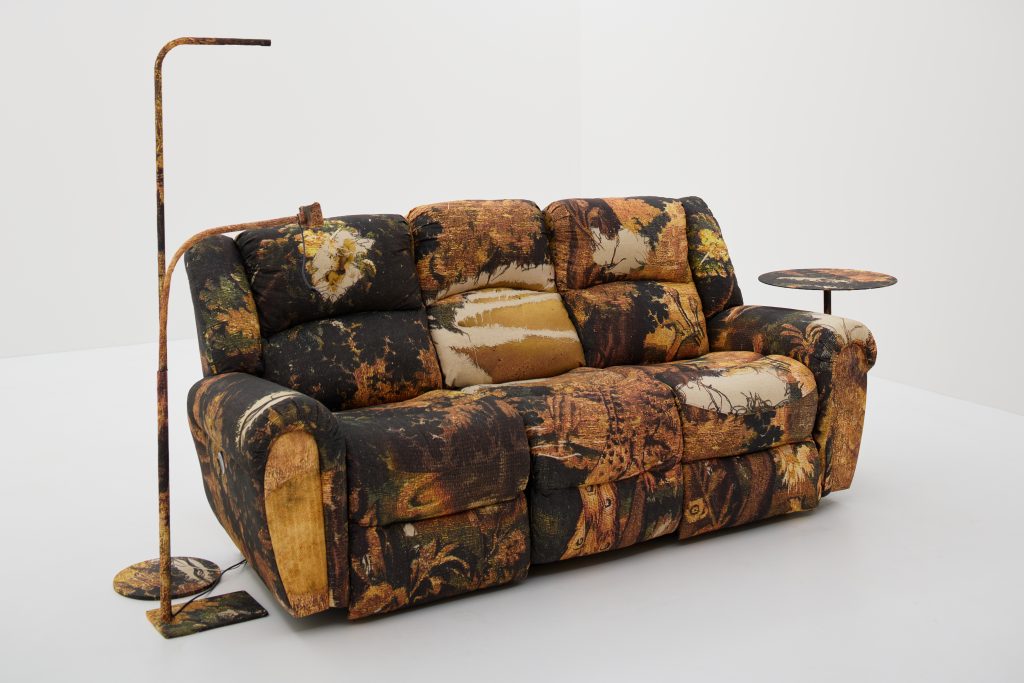
Harry Nuriev, Tapestry Sofa. Courtesy of Crosby Studios.
At Tuleste Factory‘s booth, Kouros Maghsoudi veered into a sleek realm, showing two chairs, one weighing 400 pounds and reminiscent of a satellite-dish but based on a thong. “There is a general narrative this year that is very witchy and crafty with organic materials,” he said about the fair, speaking from his recycled aluminum Neo-Lounge chair. “With all my collections, I tend to do the opposite. I use really harsh, synthetic-looking materials, even when I’m working with wood. This chair is from the Bundle Collection and inspired by the opulent New York sexy-frivolous-gay lifestyle. All my pieces really speak to being extra and, you know, not shying away from your true lifestyle.”
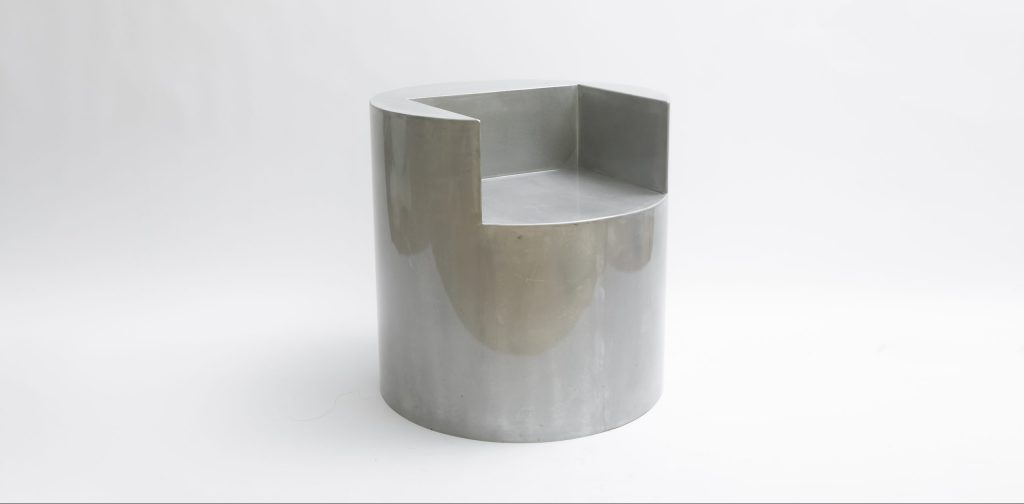
Kouros Maghsoudi, Neo-Lounge Chair. Courtesy of the artist.